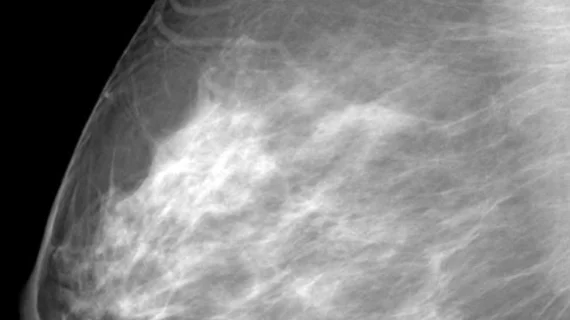Large study details new associations between breast cancer risk, breast density and benign breast disease
New research indicates that providers screening women with dense breasts and benign breast disease should consider individualized mammogram protocols for these patients, as they are at an increased risk of developing breast cancer in the future.
The sizeable study included 3.9 million Korean women (aged 40-74) who were screened for breast cancer between January 2009 and December 2010, with follow-ups available for analysis for a period averaging 10.6 years. Throughout this duration, more than 58,000 of the women developed breast cancer, 18.4% of whom had benign breast disease reported prior to their diagnosis.
“While these benign breast diseases are not cancerous or life-threatening, our results, together with evidence from previous findings, show that they might increase the risk of breast cancer,” said study senior author Boyoung Park, MD, from the Department of Preventive Medicine at Hanyang University College of Medicine in Seoul, Korea.
The retrospective analysis utilized a national breast cancer screening program linked with a cancer registry to compare reports of women identified as having extremely dense breast tissue, benign breast disease, fatty breasts and/or a combination of any of these findings.
“Although breast density and benign breast disease are strong risk factors for breast cancer, few studies have comprehensively elucidated their combined effects,” the authors wrote.
Researchers shared that women included in the study who had extremely dense breasts were observed to have 3.2% higher odds of developing breast cancer over a span of 10 years. That’s compared to the 1.36% increased risk in women with fatty breast tissue. A combination of benign breast disease and extremely dense breasts were found to have an increased risk of 2.64%.
The authors suggested that their findings support the need for breast screening protocols that take these findings into account once discovered.
“With the current findings, we believe that women with dense breasts and the presence of benign breast disease would be potential targets for supplemental screening,” said coauthor Soyeoun Kim, MPH, a doctoral candidate in Park’s lab.
Additionally, the experts indicated that adjustments to screening ages and frequency may need to be considered in certain populations. They are continuing their research efforts by developing a predictive model that includes features that are not currently included in other models.
The full study is published in Radiology.
Related breast imaging news:
Malignant architectural distortion ably diagnosed on breast imaging by human-AI combo
Most states' breast cancer screening plans do not comply with USPSTF guidelines
Experts suggest new follow-up imaging protocols for vaccine-related lymphadenopathy
AI-based mammo screening protocol reduces radiologist workload by 62%
References:
“Mammographic Breast Density, Benign Breast Disease, and Subsequent Breast Cancer Risk in 3.9 Million Korean Women.” Collaborating with Soyeoun Kim and Dr. Park were Tran Thi Xuan Mai, Ph.D., Huiyeon Song, B.S., Seungho Ryu, M.D., Ph.D., and Yoosoo Chang, M.D., Ph.D.

